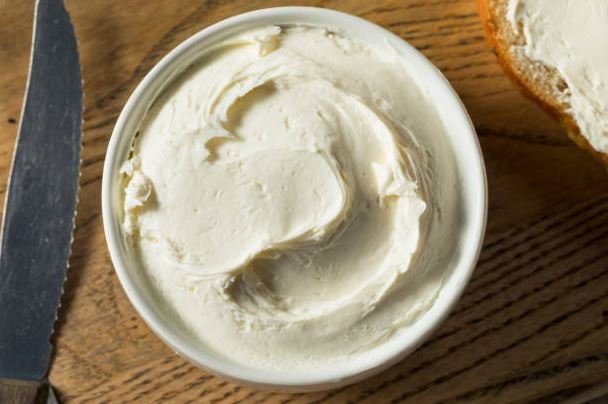Whether you’re a seafood enthusiast or want to make the most out of your fresh fish, understanding how long tilapia can last and the proper storage methods is essential.
In this article, we’ll address common questions like how long unopened tilapia can be stored in the refrigerator and freezer, how to identify signs of spoilage, and whether it’s safe to consume tilapia past its expiration date.
How Long Does Unopened Tilapia Last in the Refrigerator?
When refrigerating unopened tilapia, the shelf life primarily depends on its freshness at purchase. Unopened tilapia can last for up to 2 to 3 days when properly stored in the refrigerator. To maximize its shelf life, ensure that the tilapia is tightly sealed in its original packaging or placed in an airtight container to prevent any exposure to air and moisture.
Maintaining a refrigerator temperature below 40°F (4°C) is crucial for preserving the quality and freshness of unopened tilapia. The colder temperature helps slow the growth of bacteria and other microorganisms that can cause spoilage. Additionally, storing the tilapia away from raw meat, poultry, or seafood is important to avoid cross-contamination.
What is the Shelf Life of Unopened Tilapia in the Freezer?
For longer-term storage, the freezer is your best friend. Unopened tilapia can maintain its quality for 6 to 9 months in the freezer when properly stored. The freezing process halts bacterial growth and helps preserve the freshness of the fish. However, it’s essential to store the tilapia in a freezer-safe, airtight container or wrap it tightly in heavy-duty aluminum foil or freezer bags to prevent freezer burn and maintain its flavor.
Set your freezer temperature to 0°F (-18°C) or below for the longest possible shelf life. This temperature range keeps the tilapia frozen solid and helps retain its texture and taste. It’s worth mentioning that while unopened tilapia can last up to 9 months, it’s best to consume it within the first 3 to 4 months to enjoy the highest quality and flavor.
Can Unopened Tilapia Go Bad If Stored Properly?
Even when stored properly, unopened tilapia can still go bad over time. While refrigeration and freezing slow down the spoilage process, they don’t completely halt it. Bacteria, enzymes, and other factors can gradually deteriorate the quality of the fish, leading to off-flavors and texture changes.
Proper storage techniques such as refrigeration temperatures below 40°F (4°C) or freezing temperatures below 0°F (-18°C) help slow down the spoilage process and extend the shelf life of unopened tilapia. However, it’s important to note that the fish’s freshness at purchase is crucial in determining its overall shelf life.
How Can I Tell if Unopened Tilapia Has Gone Bad?
To determine if unopened tilapia has gone bad, there are a few signs you can look out for:
- Odor: Fresh tilapia should have a mild, slightly fishy odor. If you notice a strong, unpleasant smell resembling ammonia or a rotten scent, it indicates that the fish has spoiled.
- Texture: Fresh tilapia should have firm, translucent flesh. If the flesh appears slimy, sticky, or mushy, it’s a sign of spoilage. Additionally, if you notice any discoloration or dark spots on the fish, it’s best to discard it.
- Appearance: The eyes of fresh tilapia should be clear and bright. Cloudy or sunken eyes are a telltale sign of deterioration. Additionally, the gills should be vibrant red, not gray or brown.
If you encounter any of these signs, it’s advisable to discard the tilapia to avoid any potential foodborne illnesses.
Are There Any Signs or Indicators That Unopened Tilapia Has Spoiled?
Visual spoilage indicators may be limited regarding unopened tilapia since the fish is still sealed in its packaging. However, there are a few indicators to consider:
- Damaged Packaging: If the packaging of the unopened tilapia shows signs of damage, such as tears or leaks, it may have been exposed to air and contaminants, increasing the risk of spoilage.
- Excessive Ice Crystals: If you notice a significant amount of ice crystals forming inside the packaging, it could indicate that the fish has undergone multiple freeze-thaw cycles, compromising its quality.
- Bulging or Swollen Packaging: If the packaging appears swollen or bloated, it may indicate the presence of harmful bacteria or gases, suggesting spoilage.
If you encounter any of these indicators, it’s best to err on caution and discard the unopened tilapia.
Can I Consume Unopened Tilapia Past its Expiration Date?
While expiration dates are a general guideline for consuming perishable foods, they aren’t set in stone. Unopened tilapia can often be consumed past its expiration date if it has been properly stored and shows no signs of spoilage. However, it’s important to rely on your senses and evaluate the fish’s freshness before deciding.
Perform a visual and sensory inspection to ensure that the unopened tilapia has maintained its quality. If it passes the odor, texture, and appearance tests mentioned earlier, it’s likely safe to consume, even if it’s slightly past the expiration date. However, if you have any doubts or notice any signs of spoilage, it’s best to discard the fish to avoid any potential health risks.
What is the Recommended Storage Time for Unopened Tilapia to Maintain its Quality?
To maintain the highest quality of unopened tilapia, it’s recommended to consume it within the designated timeframes:
- Refrigerator Storage: Consume unopened tilapia within 2 to 3 days when stored in the refrigerator below 40°F (4°C).
- Freezer Storage: For optimal quality, consume unopened tilapia within 3 to 4 months when stored in the freezer at temperatures below 0°F (-18°C).
Adhering to these storage recommendations ensures you enjoy the freshest tilapia with minimal risk of spoilage.
Can I Freeze Unopened Tilapia if I Don’t Plan to Consume it Within a Few Days?
Freezing unopened tilapia is an excellent option to extend its shelf life. Ensure the fish is tightly sealed in an airtight container or wrapped securely in heavy-duty aluminum foil or freezer bags. This helps prevent freezer burn and maintains the fish’s quality for longer.
Is it Necessary to Rinse Unopened Tilapia Before Storing it in the Refrigerator or Freezer?
It’s not necessary to rinse unopened tilapia before storing it. Rinsing the fish can introduce additional moisture, which may lead to faster spoilage. Keep the fish in its original packaging or transfer it to an airtight container or freezer-safe bag for storage.
Can I Thaw Unopened Tilapia and Refreeze it if I Decide Not to Cook it Immediately?
It’s generally safe to thaw unopened tilapia and refreeze it once. However, remember that each time the fish undergoes the thawing and refreezing process, its quality may gradually decline. It’s best to plan your meals accordingly to minimize the need for repeated thawing and refreezing.
Conclusion
Understanding the shelf life and proper storage methods for unopened tilapia ensures its freshness and quality. By refrigerating unopened tilapia at temperatures below 40°F (4°C) and freezing it at temperatures below 0°F (-18°C), you can extend its shelf life and maintain its flavor. Remember to discard any tilapia that shows signs of spoilage, such as a strong odor, slimy texture, or discoloration.
While unopened tilapia can be consumed past its expiration date if it remains fresh, it’s important to trust your senses and evaluate the fish’s quality before consuming it. When in doubt, it’s better to err on the side of caution and discard the fish to avoid potential health risks.



















